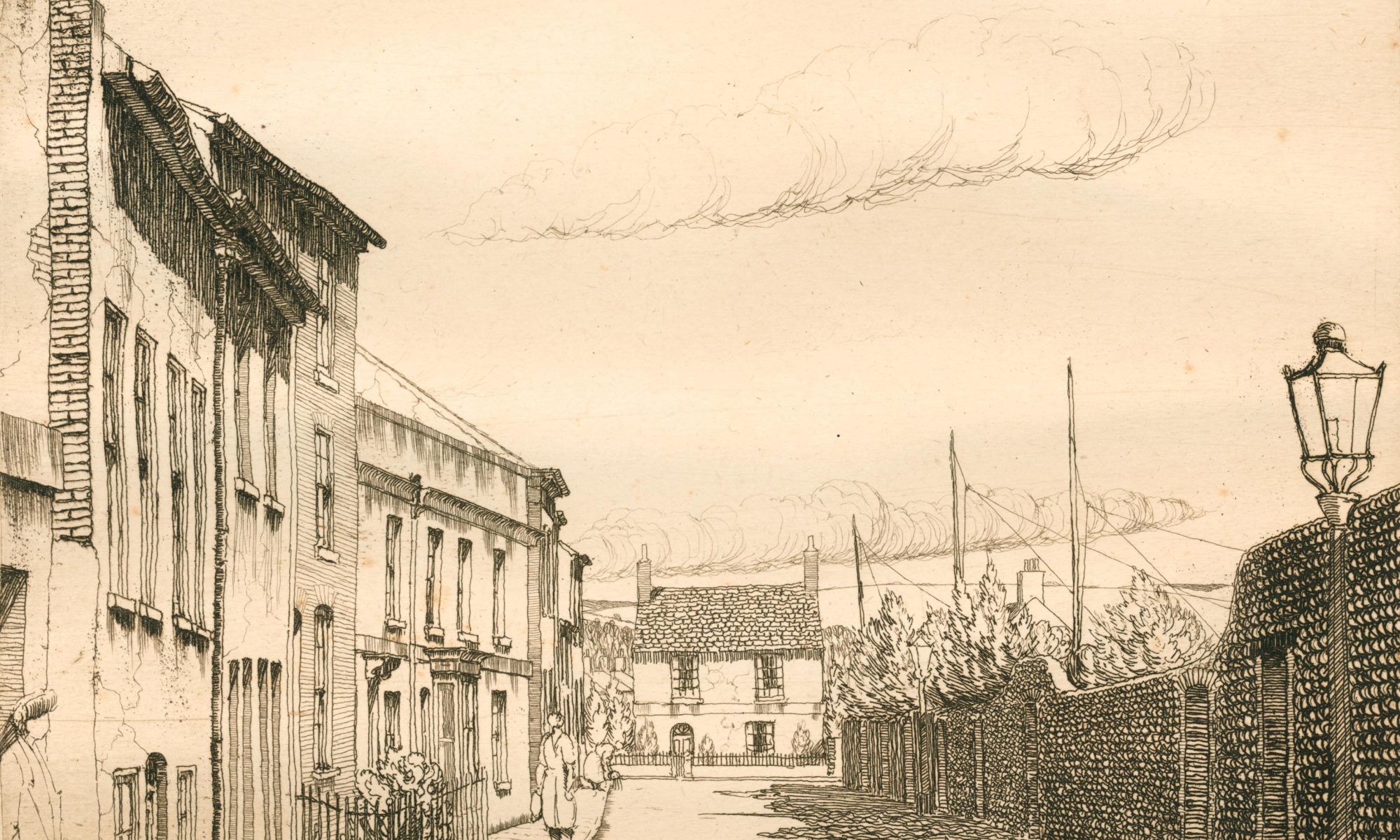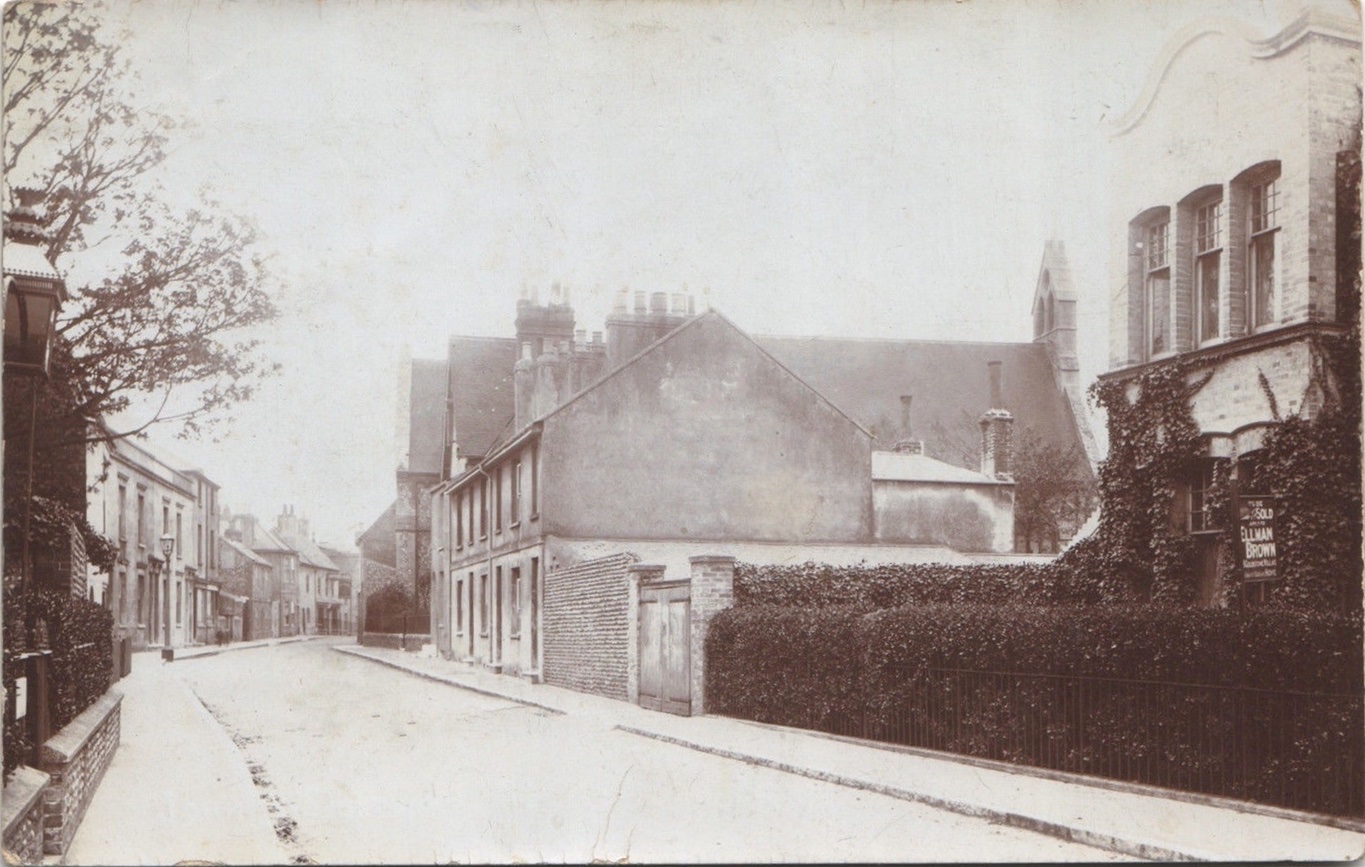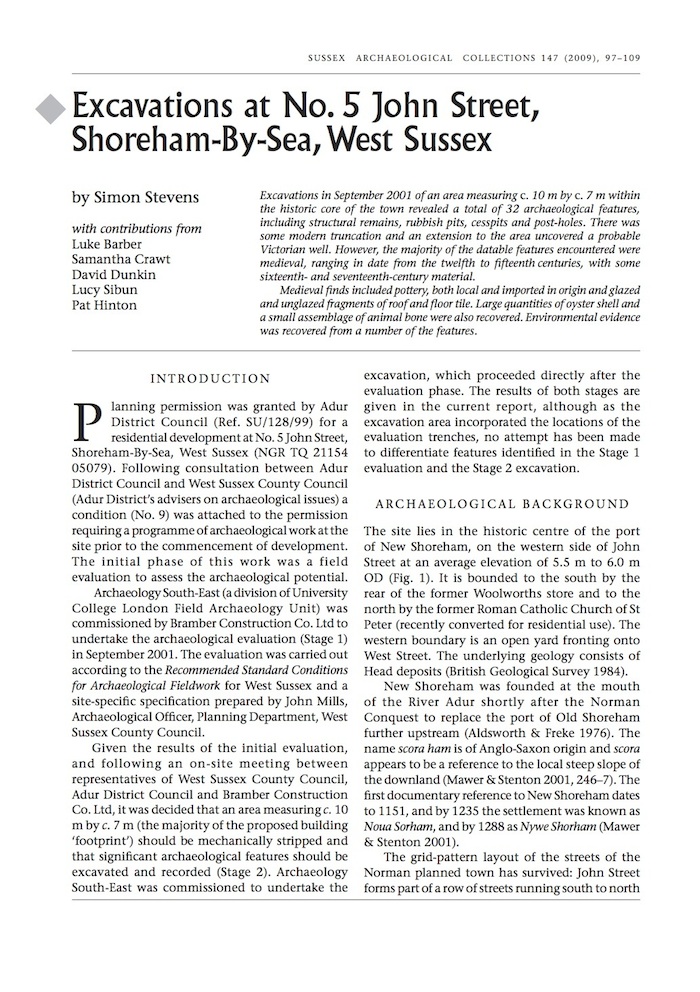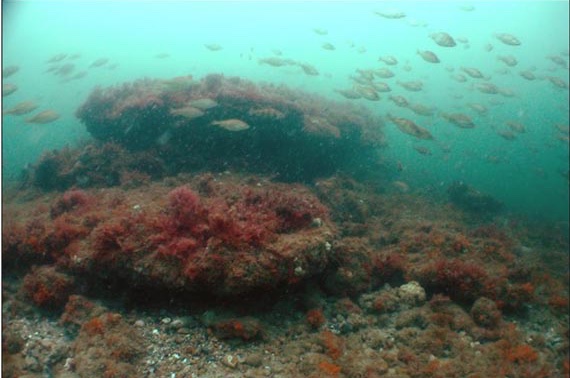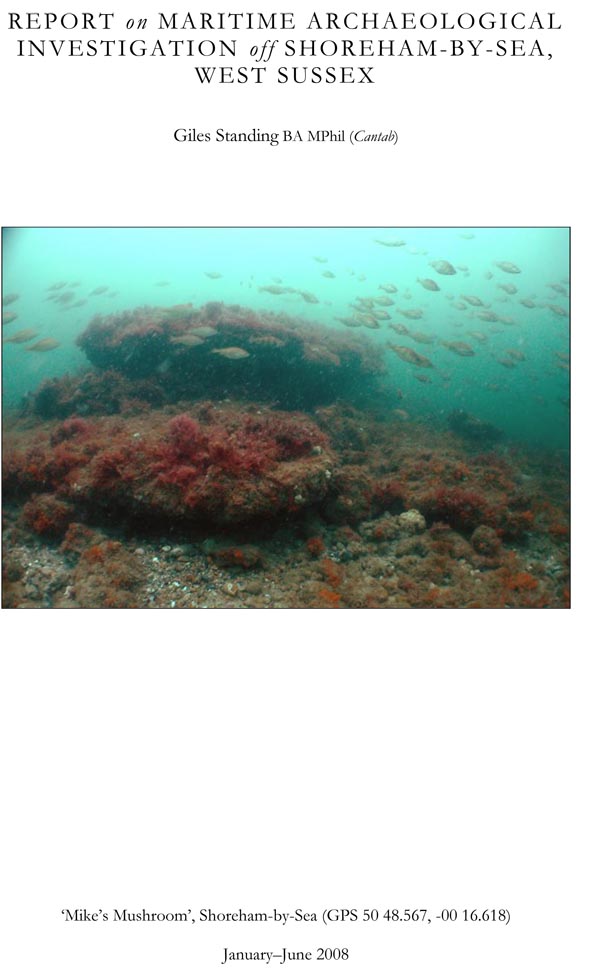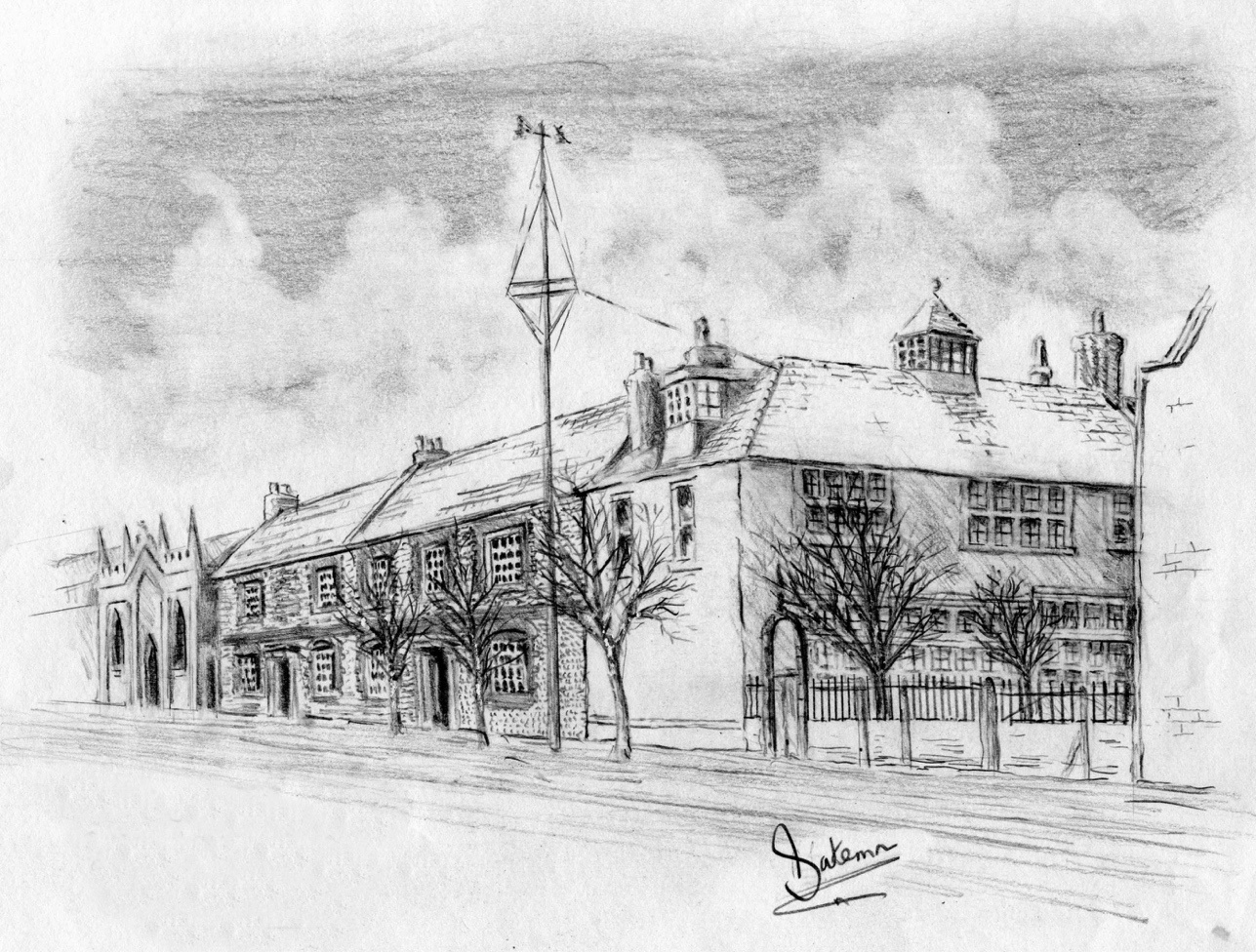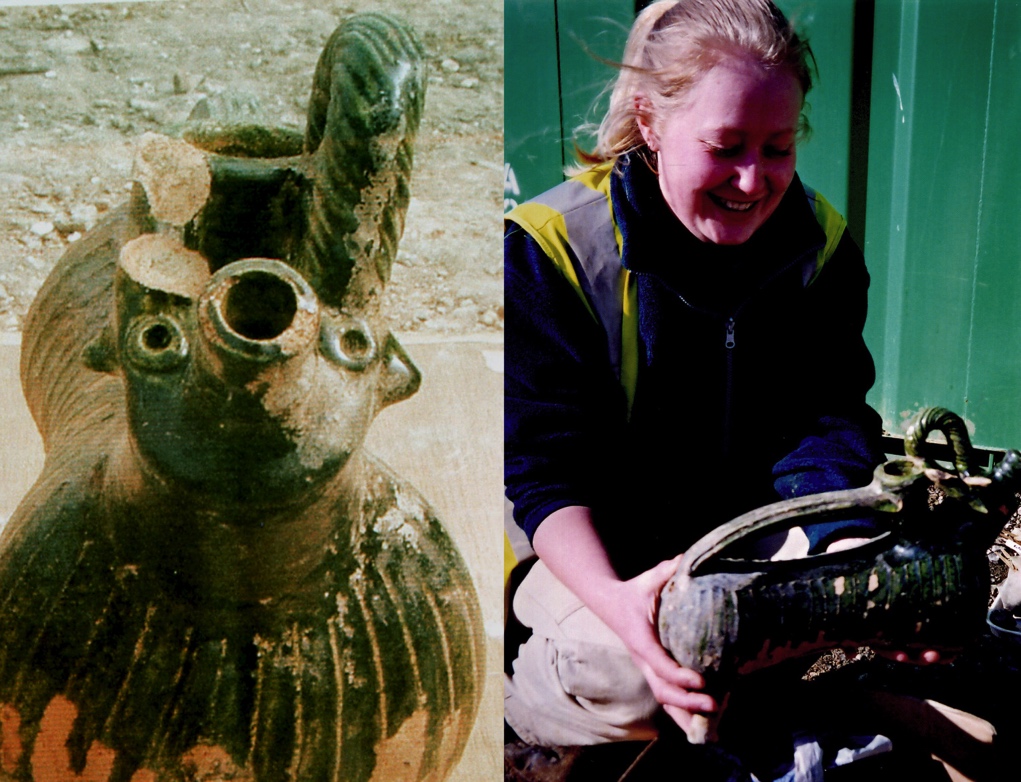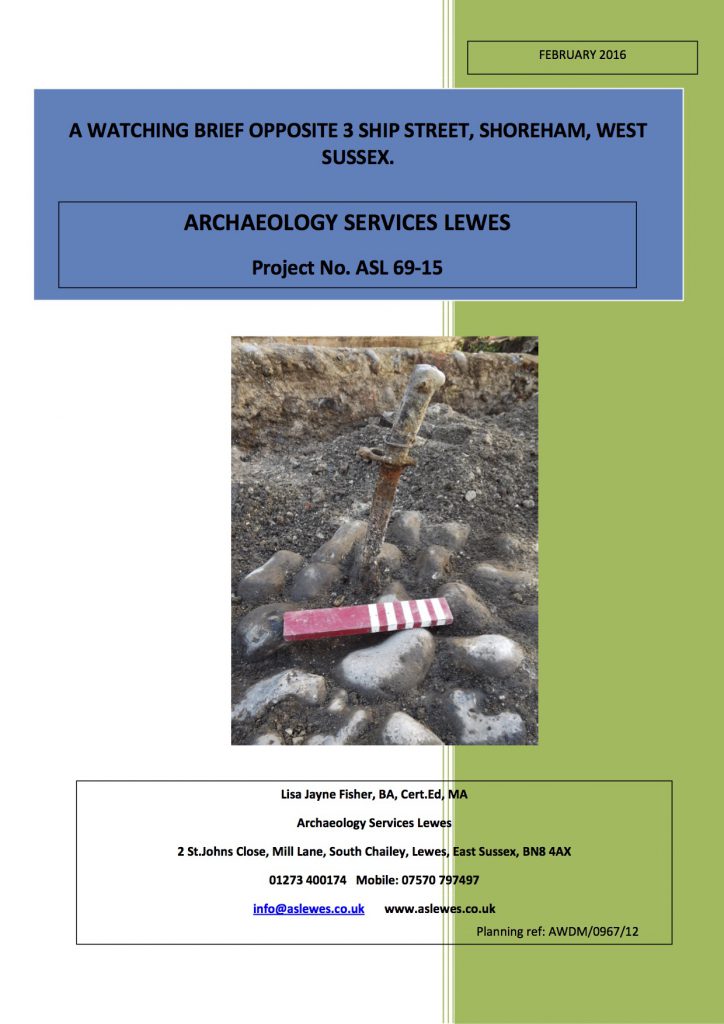
Summary
In August 2015 ASL were sub-contracted to maintain a Watching Brief on land opposite 3 Ship Street Shoreham, by West Sussex Archaeology LTD. This took place over the course of nine days in September 2015 on the 7th – 11th and then a second week on 21st, 22nd, 23rd and 25th.
Remnants of domestic medieval pits were partially excavated containing burnt cereal grains, building material and pottery dating to the 13th – 14th century. A later phase was represented by the demolished remains of an 18th century building and cobbled yard which was replaced by a later 19th century house. A mid 19th century French bayonet was found rammed through the yard surface. In the mid 20th century the house was demolished and the area levelled to create a car park space.


